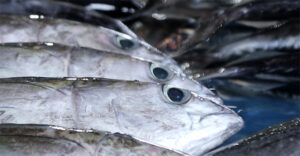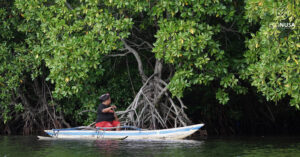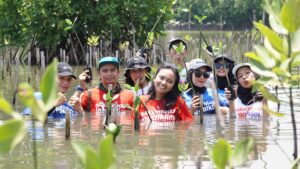
Development of integrated coastal and land areas is one of the preliminary step to sustainable development. As a country with the second longest coastline in the world, it is ironical that the development focuses on land. However, the management of coastal areas economy should comply with the local and indigenous communities as the largest stakeholder.
Professor on Geography of the Yogyakarta’s Gadjah Mada University, M. Baiquni, said that, prior to Indonesian announcement for being the world’s maritime axis in 2014, Yogyakarta Province Governor, Sri Sultan Hamengkubuwono X, had introduced a so-called Among Tani Dagang Layar (ATDL/ local concern for agriculture and fishing) paradigm as the basis of development. With the paradigm, Yogyakarta government attempts to integrate development and maritime aspect.
“Ocean is the source of livelihood and agrobusiness on maritime. With ATDL, it is expected there is balance of land and ocean. Fisheries are the key for the future. To achieve it, there should an integration of cultural heritage and technology,” said Baiquni on a Sail to Campus virtual discussion entitled “Among Tani, Dagang Layar” on Tuesday, March 30, 2021 in Yogyakarta.
Read also: Releasing a Music Video, Slank Invites to Save the Forest
Coastal and ocean areas have crucial roles in terms of conservation and economy. For instance, mangrove ecosystem serves as the protection of flooding and tsunami, coastal erosion, fishery breeding, land debris filtering to keep coral reef healthy, and sustainable financing from blue carbon.
Blue Carbon Science Director, Asia Pacific – Conservation International, Barakalla “Bara” Robyn, said that coastal and marine areas store higher carbon than terrestrial areas below ground carbon. This shows that coastal and marine areas play important roles to control over the current happening of climate crisis.
As to Bara, Indonesia has major role to intervene mangrove conservation and restoration. Indonesia is known as the country with the largest mangrove areas with more than 3 million hectares of areas or 22 percent of global mangrove. Besides, mangrove potentially saves a quarter of global carbon.
Read also: Religious Believer’s Overarching Role to Protect Earth
“When we talk about mitigation, Indonesia should play its roles in climate crisis mitigation initiative. Having had mangrove, we need to call for mangrove ecosystem protection. Mangrove deforestation mostly occurs at the aquaculture areas. It happens from the central parts heading to the east of Indonesia. On the western parts, the threat comes from expansion of plantation,” said Barra.
To address the importance of the ecosystem existing on the coastal and marine areas, young people have crucial role. The population of young people as the demographic bonus could drive the policy makers to side with conservation and restoration endeavours. Youngsters through social media could disseminate their concerns to the world.
Noviana Safitri, an influencer, makes use of social media to call public to love vegetation by being a plant parent. The plant parent concept is known by millennials as a way to nurture plant as if being parent. As to her, plant parent forces her to be patient and grow more concern with environment.
Read also: Fasting Declining Consumption?
“Social media is very important, let alone when we are active and consistent. If we become a walk the talk by being plant parent, for instance, I like updating on social media. There will be many more people motivated to become plant parent,” she said.
Editor: Leo Wahyudi & V Arnila Wulandani




